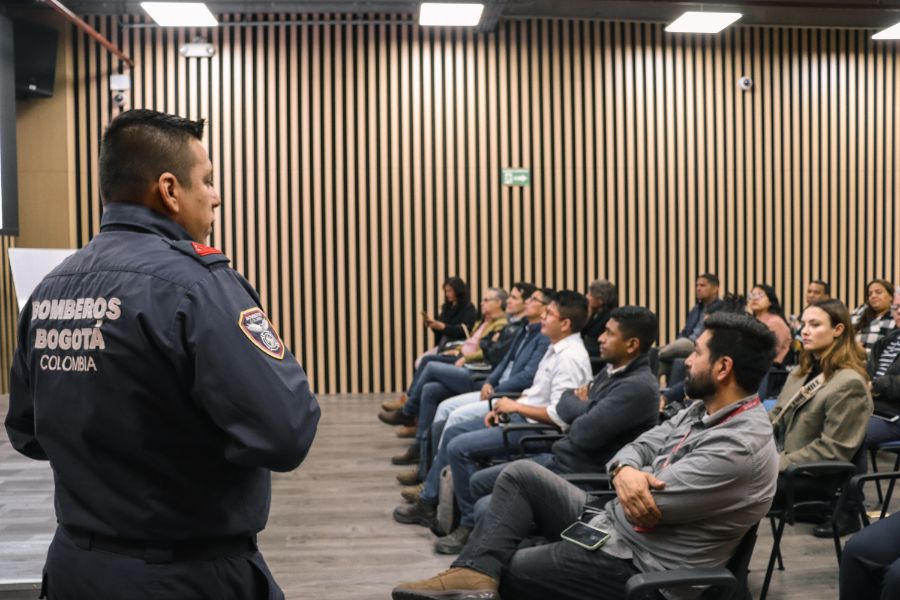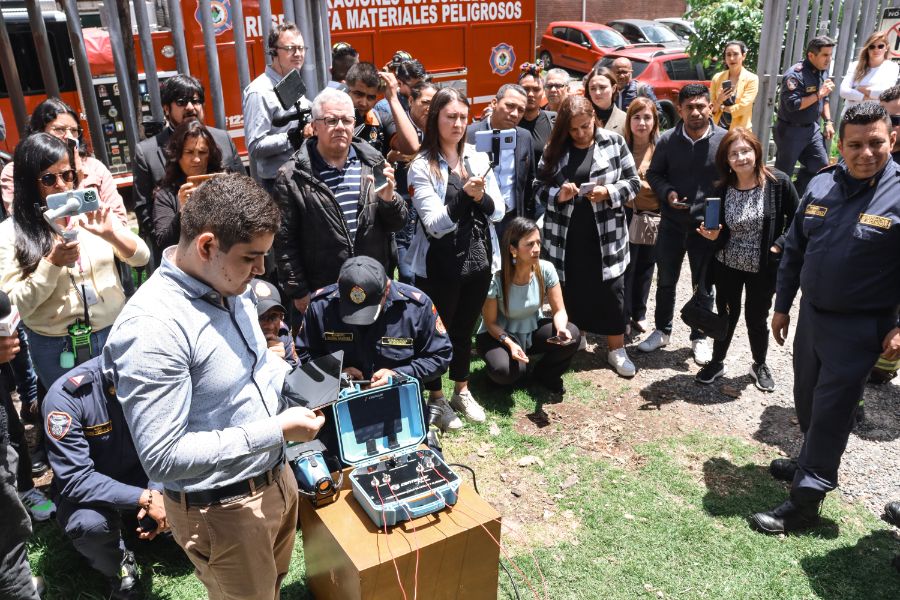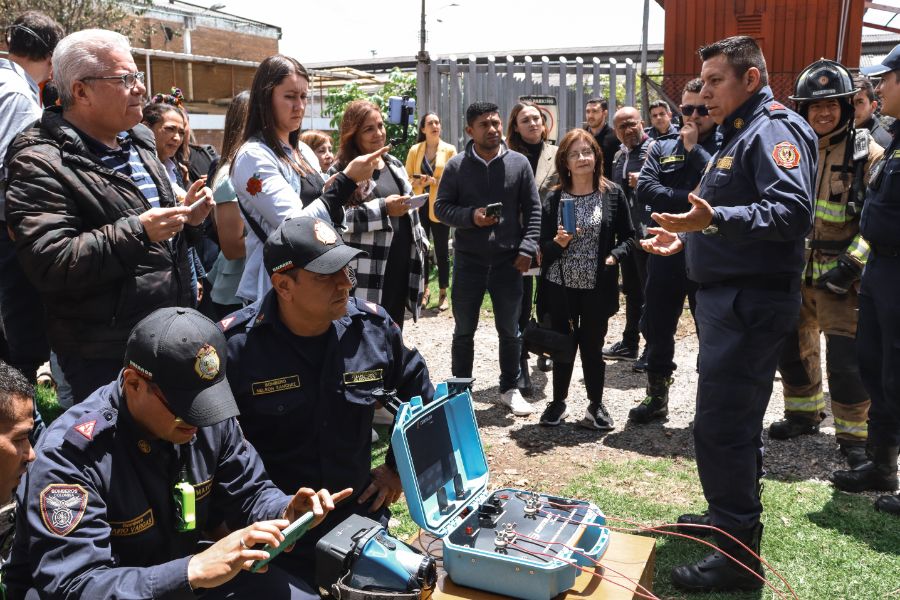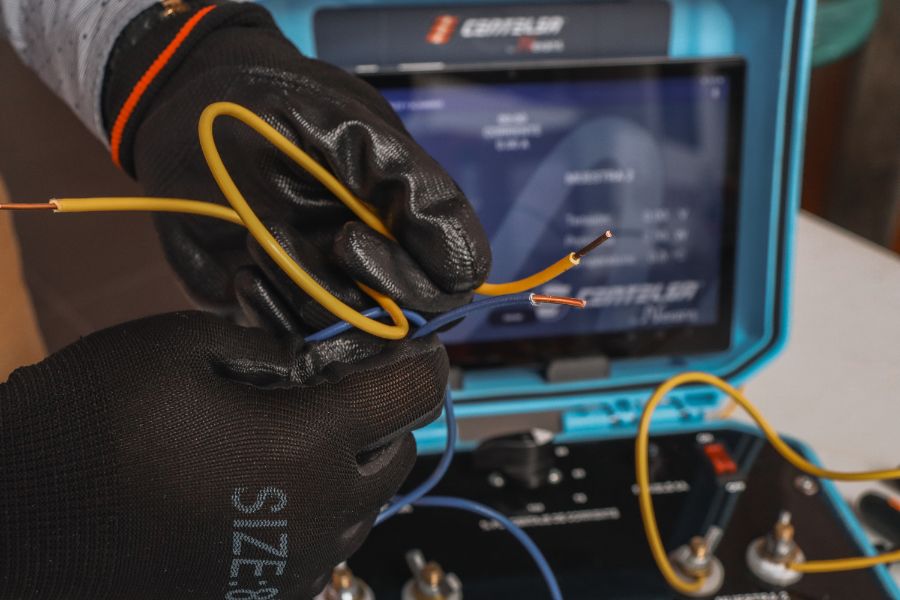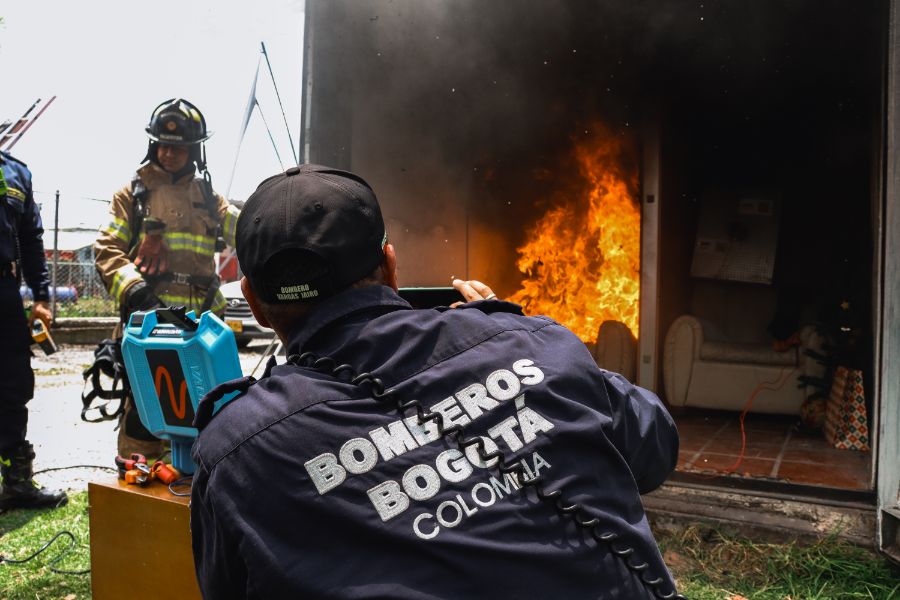Electrical failures, one of the main causes of fires in Colombia
Oct 11, 2023
- Historically, 43% of accidents related to fraudulent energy use have resulted in burns, according to records from the Superintendencia de Servicios Públicos Domiciliarios (Superintendence of Public Utility Services).
- The use of adulterated, counterfeit, or uncertified cables in electrical installations in various regions of the country increases the risk of short circuits and/or fires, endangering people's lives and their property.
- According to the Dry Construction Association, the regions where counterfeiting, smuggling, and piracy in construction profiles are most frequently reported are Bogotá, Villavicencio, and Cali.
- In response to this situation, Centelsa by Nexans provides recommendations for identifying counterfeit cables and presents solutions that individuals can use to easily detect them.
Anitcounterfeit cables event - Centelsa by Nexans, ACS& Bogota's Firefighters
Bogotá DC. Colombia
Colombia, October 2023. Currently, there is a nationwide issue affecting the well-being and health of Colombian individuals and households. Moreover, it does not contribute to energy savings. This issue is the increasing use of counterfeit and illegal products and services, such as cables for electrical installations, which are presented as certified cables when they are not.
The use of these adulterated cables in electrical installations elevates the risk of accidents and endangers the lives of people and homes. According to figures provided by the Superintendencia de Servicios Públicos Domiciliarios (Superintendence of Public Utility Services), historically, 43% of accidents related to fraudulent energy use have resulted in burns.
According to statistics from the Fire Investigation Team of the Official Fire Department of Bogotá, in the current year of 2023, 42% of the fires that have occurred in the Colombian capital are caused by electrical failures that can be attributed to the use of non-original cables.
In response to this, Centelsa by Nexans, the company that has played a crucial role in safe and sustainable electrification in Colombia, explains the three main differences to identify counterfeit wires and cables:
- Counterfeit wires and cables have a thinner, harder, more brittle, and darker-colored metal compared to the pure copper used in original wires.
- Counterfeit wires and cables have more plastic material that lacks any insulating properties and is highly flammable.
- Original wires and cables have three layers over the conductor wire: the first layer is insulation, which is always white, the second layer is the required color, and the third layer is an outer nylon layer. Counterfeit wires and cables have only one layer of plastic in a single color and one nylon layer.
Counterfeit wires and cables use materials unsuitable for conducting electricity, leading to increased losses and potential increases in energy costs. Additionally, their high electrical resistance results in temperature increases, causing plastic to melt, leading to short circuits, fires, and toxic fumes, putting people's lives at risk.
In response to this issue, Centelsa by Nexans has developed communication campaigns, including the “Cuando es original, se nota. Y cuando no, también” campaign, which aims to raise awareness and create consciousness about the topic.
Furthermore, the company has launched Nexans Line Plus, a solution for THHN wires and cables, which are widely used in residential construction. This solution includes a digital development in partnership with Authentic Vision, a special label containing a security hologram and a unique QR code for each product roll, allowing users to verify the authenticity of Centelsa by Nexans products. People only need to scan the label using the mobile application available on the Centelsa by Nexans website.
Finally, according to the Dry Construction Association, there is also evidence of an increase in foreign distributors offering construction products without invoices, with payment facilities, and at prices much lower than those offered by local manufacturers. This issue is prevalent in different regions of the country, with statistics as follows:
- Bogotá: 44%
- Villavicencio: 16%
- Cali: 12%
- Bucaramanga: 8%
- Cucutá: 4%
- Medellín: 4%
- Mosquera: 4%
- Pamplona: 4%
- Soacha: 4%
“ Centelsa by Nexans has been working to provide safety solutions. Therefore, we call on individuals and companies in the electrical construction sector to consider the risks associated with the use of counterfeit wires and cables and the importance of verifying the product's authenticity at the time of purchase. Check the authenticity of Centelsa by Nexans THHN wires and cables. ”
Martha Sepulveda
Offer ManagerConsecuences of using counterfeited products in construccions projects.
About Centelsa by Nexans:
For over a century, Nexans has played a crucial role in electrifying the planet and is committed to electrifying the future. With around 28,000 people in 42 countries, the Group leads the way toward a safe, sustainable, renewable, decarbonized, and accessible electric world. In 2022, Nexans generated sales of €6.7 billion. The Group is a leader in designing and manufacturing wiring systems and services in four main areas: Building & Territories, High Voltage & Projects, Industry & Solutions, Telecommunications & Data. Nexans is the first company in its industry to create a foundation that supports sustainable initiatives to provide energy access to disadvantaged communities worldwide. The Group's commitment is to contribute to carbon neutrality by 2030.
Nexans has been present in Colombia since 2008, and in April 2022, it completed the acquisition of the premium cable manufacturer CENTELSA, with the firm intention to continue electrifying the future of Colombia and Latin America. Thus, the Group expects to consolidate its value offer throughout the electrification chain, reaffirming its role as a strategic partner in the energy transition of the region.
Our websites
Select your country to find our products and solutions
-
Africa
- Africa
- Ghana
- Ivory Coast
- Morocco
- North West Africa
- Americas
- Asia
- Europe
- Oceania
